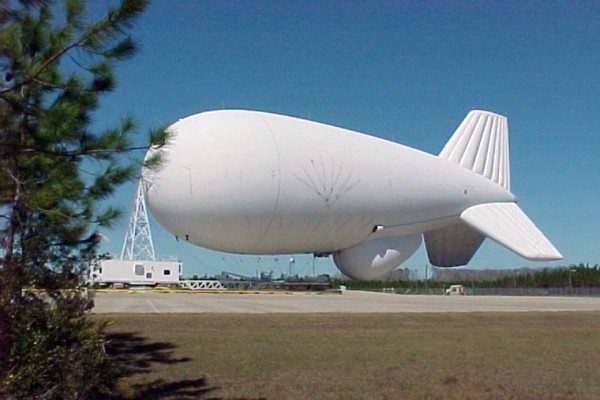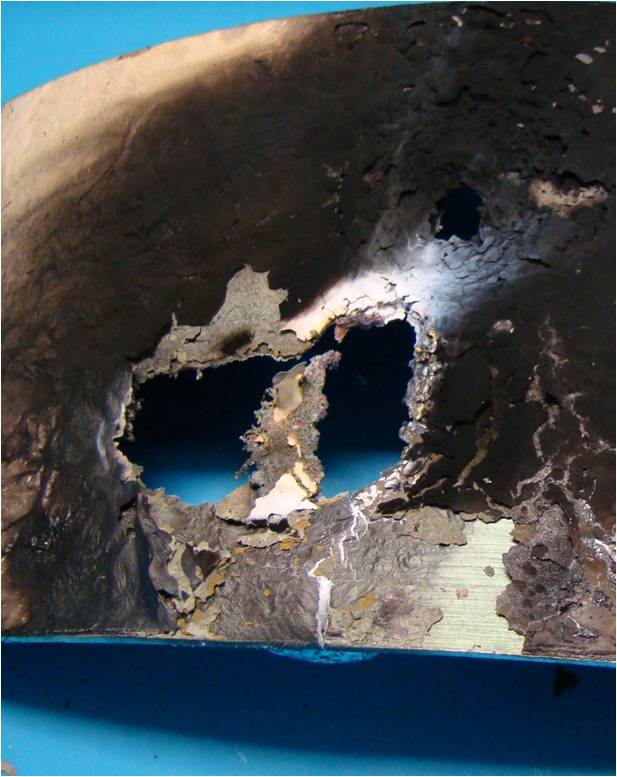A new air defense radar system is undergoing testing on White Sands Missile Range to ready it for later integrated testing with the Navy this fall.
The Joint Land Attack Cruise Missile Defense Elevated Netted Sensor System, or JLENS, is an advanced radar system that is intended for use by the Army, Air Force and Navy as part of a larger air and missile defense network.
“In simple terms JLENS, is an elevated radar platform which is specifically designed to track and defeat land attack cruise missiles,” said Maj. Michael Fitzgerald an assistant product manager with the JLENS Product Office under Program Executive Office Missiles and Space.
The objective of the system is to provide a long range radar system that can detect small low flying targets like cruise missiles, as well as other airborne threats, so air defense systems can engage them sooner and with more accuracy.
Radar works by sending out radio waves into the air. When the waves hit something like an aircraft, they bounce off, reflecting back to the radar system and allowing the system to determine where the aircraft is. Unfortunately other objects like tall buildings, hills, and mountains can block the radar waves and disrupt or limit that radar. Cruise missiles are designed to take advantage of this limitation by flying low to the ground along routes that allow them to hide behind terrain.
“What the Aerostat allows you to do is get above the ground clutter. The whole objective of this system is to provide protection to ground assets that cannot see through mountains or other ground clutter,” said Steven Stone Raytheon’s test director for JLENS Integration at WSMR.
Using large blimp-like balloons called aerostats, JLENS seeks to counter the threat of low flying missiles and aircraft by taking a powerful surveillance radar to altitude, allowing the system to look down from heights of up to 10,000 ft. and over nearby terrain, eliminating blind spots and extending the range of the radar.
“The surveillance radar has a 360 degree capability, it kind of sees everything at once,” Fitzgerald said.
Since the elevated radar must look down to detect and track missiles and aircraft, the radar also gets back lots of data on the ground beneath the airspace it’s monitoring. For a normal radar, this would cause a lot of interference that could disrupt operations. JLENS ground station however, utilizes advanced computer systems that can filter out this ground clutter and leave the service member’s view screens with a clear image of the air they are defending.
Once a target has been located, a targeting radar system in a second aerostat can then lock onto the target and feed that data to air defense weapon systems. These systems would then be able to engage and destroy the target.
“The fire control radar, which is very precise, can see a long distance, track targets, and hand off targets to other air defense platforms,” Fitzgerald said.
To lift the radar the aerostats need to have some serious lifting power.
“The radar, the cooling equipment, and some of the other electronics associated with it are fairly heavy, because they are obviously, built to military standards and built to handle a military environment threat environment. So therefore it has to have enough lift to lift a fair amount of weight,” said Stone.
To achieve this lift, each aerostat must be very large, almost the size of a football field. Visible from WSMR’s main post, the JLENS site includes one Aerostat, which will be interchangeably equipped with the surveillance or fire control radar, along with the JLENS mobile mooring station that holds the aerostat in place, and the ground station composed of a data processing shelter, a signal processing shelter and a communications and control station.
The radar’s long range, which covers an area larger then New Mexico, allows it to monitor large operational areas, making the system valuable to not only the Army, but the other services as well. Each service has different weapons and requirements which JLENS must meet if it is to work and so extensive integration testing is required. For this reason a single JLENS aerostat has been brought to WSMR.
Over the next few months the JLENS system components will be checked out and its systems tested to prepare it for integration with Naval air defense systems and testing on WSMR.
“The weather, when it holds, has helped out a lot. But so far the test has been going good and we’ve been meeting all the objectives set out for us,” Stone said.
The Naval requirements are the reason why WSMR was chosen for these tests. Along with WSMR’s expansive military controlled air space, WSMR’s Naval detachment provides the right environment for the integration of this joint system into Naval operations.
In addition to the experienced Sailors the Naval Detachment brings to the table, the Navy also commands the Desert Ship, a specialized test bunker on WSMR that simulates a ship at sea. The Desert Ship allows tests like this to be conducted in a realistic environment, using the same systems and configurations that a ship has, but with the control and data collection needed for testing.
As the system is still in the earlier stages of development, at this time it is expected for JLENS to be an ongoing presence on WSMR for some time while the system is further developed and tested.











